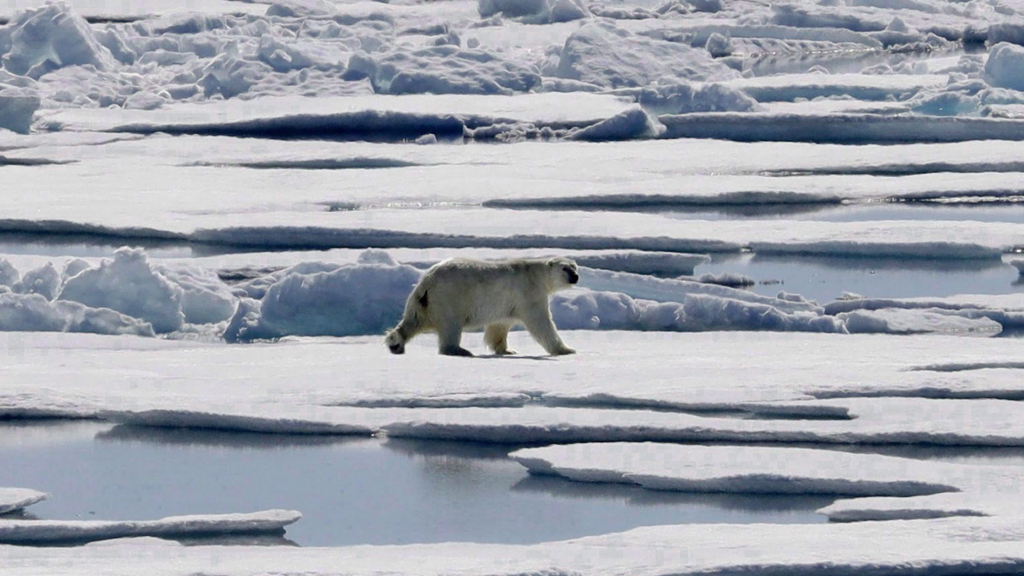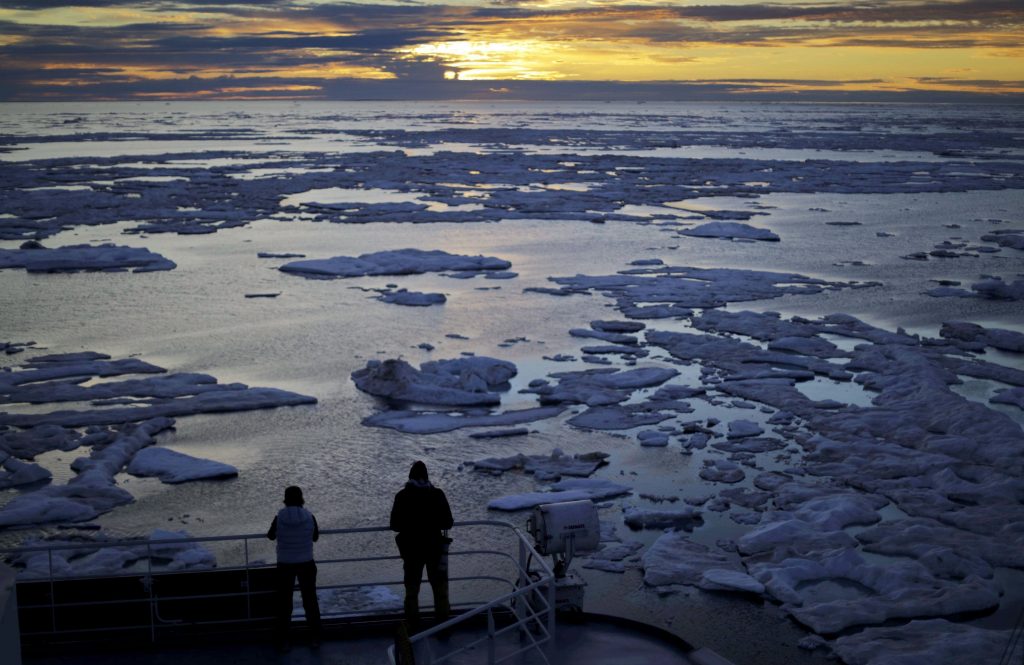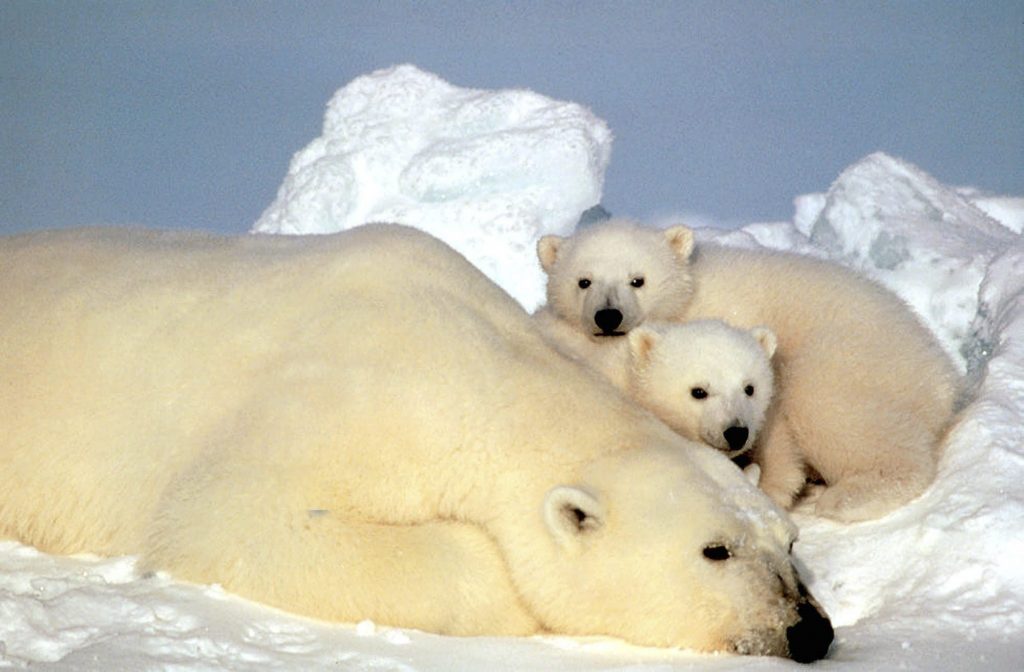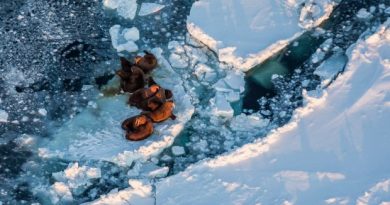Ice-free Arctic summers likely by 2050, even with climate action: study

Much of the Arctic Ocean will become ice-free during summers by 2050 even if greenhouse gas emissions are reduced sharply, according to a new study.
The study, Arctic Sea Ice in CMIP6, published in Geophysical Research Letters analyzed recent results from 40 different climate models.
Using these models, scientists from 21 research institutes from around the world assessed the evolution of Arctic sea-ice cover in a scenario with high CO2 emissions and little climate protection.
As expected, summer Arctic sea-ice disappeared quickly in these simulations.
However, some of these models also showed that the ice still disappeared even in some simulations where CO2 emissions were rapidly reduced.
“The key point is that we have now reached a point that whether we are very aggressive in cutting our emissions or whether we go business as usual, we will be seeing years without any ice in the Arctic Ocean in the summer,” said study co-author Bruno Tremblay, associate professor in the Department of Atmospheric and Oceanic Sciences at McGill University.
What will change between different scenarios is the frequency at which this phenomenon occurs, Tremblay added.
“If we go business as usual, it will be a much more frequent occurrence, it will be pretty much always the case starting in 2030, 2035 or 2040,” Trembleay told Radio Canada International in an interview from Toulouse, France, where he is on sabbatical.
“If we do severe cuts to our CO2 emissions, it will be an occurrence that happens once in a while but it will still occur.”
An ice-free Arctic

Each summer, the area of sea-ice coverage decreases and grows again in winter.
However, since researchers began keeping satellite records in 1979, summer Arctic ice has lost 40 per cent of its area and up to 70 per cent of its volume.
The entire Arctic Ocean, the smallest and the shallowest of world oceans, covers an area of about 14.06 million square kilometres.
Scientists define an ice-free Arctic as one in which the Arctic Ocean sea ice covers an area of about 1 million square kilometres or less, Tremblay said.
“When you have 1 million square kilometres of ice left, you have a thin, narrow band of ice left in the north of the Canadian Arctic Archipelago and some ice left within the archipelago but basically the entire Arctic Ocean is free of ice except for that very localized region,” Tremblay said.
The ice-free season is also expected to get substantially longer, he added.
“Ice always comes back in the winter but it will come back later and later, because as you have less and less ice, more solar light is absorbed in the surface ocean, it takes longer in the fall before you ventilate all this heat into the atmosphere,” Tremblay said.
“And so gradually October becomes ice-free as well, August as well, not just September, and then November-December becomes ice-free and June as well, so the ice-free season becomes wider and wider.”
Affecting Arctic ecosystems

This will substantially affect the Arctic ecosystem and climate, particularly ice-dependent species such as polar bears and seals, Tremblay said.
“This will mean for them a longer and longer period without ice, which basically means fasting,” Tremblay said.
“For polar bears it means staying on land and they will have to wait until the end of October, November and then finally December before they can return and hunt [on the ice],” Tremblay said.
Female polar bears give birth to cubs in January and February and then go on the ice in May to hunt seals and fatten up until the ice-free season comes and they have to fast, he said.
With the ice-free season coming earlier and lasting longer, this means polar bears will have to fast for much longer.
Research in the Western Hudson Bay in the southern part of the Canadian Arctic shows that the average fasting time for polar bears in the area has gone from 107 days in the 1980s to 130 days in the early 2000s.
As a result, the Western Hudson Bay polar bear population is estimated to have dropped by 30 per cent since the 1980s. Other polar bear populations further north in the Canadian Arctic are stable or even growing. However, that could change with the warming climate.
“We’re seeing in the Hudson Bay now is what we will be seeing the Arctic Ocean in a decade or two,” Tremblay said.
The models looking even further into the future into 2100 and 2200 predict an ice free Arctic even in the winter, Tremblay said.
However, as the Arctic sea-ice extent decreases during this transition to an ice-free Arctic, the year-to-year variability in extent is expected to greatly increase, Tremblay said.
The last time the Earth experienced conditions like these was about 6,000 years ago at the end of the last glacial period when the solar insulation was much higher than it is now, Tremblay said.
“And what we’re going to see at the end of the century, you’re going to have to go back even further back, like hundreds of thousands of years, millions of years back when you saw conditions that warm,” Tremblay said.
Related stories from around the North:
Canada: Indigenous leaders in northwestern Canada declare climate emergency, CBC News
Finland: Precipitation levels in North Finland 1.5 –2 times higher than average, Eye on the Arctic
Norway: Svalbard: Colder than normal for the first time in 10 years, The Independent Barents Observer
Russia: Russia is hotter than ever say meteorological organizations, The Independent Barents Observer
Sweden: January temperatures about 10°C above normal in parts of northern Sweden, says weather service, Radio Sweden
United States: Temperatures nearing all-time records in Southcentral Alaska, Alaska Public Media



